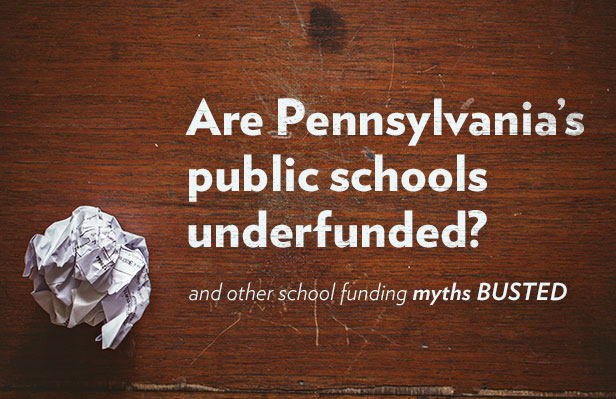Media

Flawed Arguments Drive School Funding Suit
As I pointed out earlier this week, Pennsylvania public school spending is at an all-time high. In fact, the state's per student spending is significantly above the national average.
James’ analysis adds that the latest state budget represents yet another increase in state funding for public schools, building on the all-time high established during the 2015-16 fiscal year.
Even the Secretary of Education recognized the commonwealth's education spending is high—relative to other states—and represents increases rather than cuts to funding levels. Detractors normally concede this point, but they respond with “it’s not the amount of funding, it is the inequality.”
They cite data showing a large gap in spending between wealthy (low-poverty) and poor (high-poverty) districts. Here’s the rub: That data shows Pennsylvania spends more per student in every category of districts. That is, even Pennsylvania’s high-poverty districts spend more than high-poverty districts nationally.
What does this mean? If greater “equality” is the goal, we could cut spending by wealthy districts (caps on local school property taxes would be a way to do this) and spend at the national average. These two changes would produce greater equality between districts.
Ironically, government unions, the school boards association, and their allies have lobbied against efforts to control property tax increases.
These statistics aren't meant to downplay or ignore the equity in education funding. As we've made clear in the past, Pennsylvania’s practice of “hold harmless” has created a vast disparity in state funding per student. Hold harmless is the practice of guaranteeing each school district at least the amount of state funding they received in the prior year—regardless of enrollment changes.
The result—over decades—is that districts with declining enrollments receive far more aid per student. Meanwhile, areas with growing student populations have not gotten increases to match their enrollment.
Phasing out the “hold harmless” formula so all state aid is distributed using the new student-based funding formula would fix this problem—without requiring a multibillion dollar tax increase.